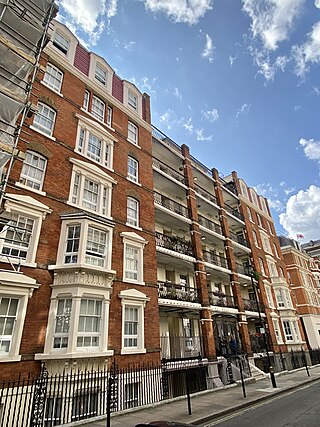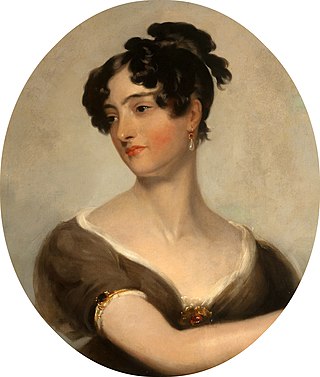
Covent Garden is a district in London, on the eastern fringes of the West End, between St Martin's Lane and Drury Lane. It is associated with the former fruit-and-vegetable market in the central square, now a popular shopping and tourist site, and with the Royal Opera House, itself known as "Covent Garden". The district is divided by the main thoroughfare of Long Acre, north of which is given over to independent shops centred on Neal's Yard and Seven Dials, while the south contains the central square with its street performers and most of the historical buildings, theatres and entertainment facilities, including the London Transport Museum and the Theatre Royal, Drury Lane.

Goldsmiths, University of London, legally the Goldsmiths' College, is a constituent research university of the University of London. It was originally founded in 1891 as The Goldsmiths' Technical and Recreative Institute by the Worshipful Company of Goldsmiths in New Cross, London. It was renamed Goldsmiths' College after being acquired by the University of London in 1904, and specialises in the arts, design, computing, humanities and social sciences. The main building on campus, known as the Richard Hoggart Building, was originally opened in 1844 and is the site of the former Royal Naval School.

The East India Company College, or East India College, was an educational establishment situated at Hailey, Hertfordshire, nineteen miles north of London, founded in 1806 to train "writers" (administrators) for the East India Company. It provided general and vocational education for young gentlemen of sixteen to eighteen years old, who were nominated by the Company's directors to writerships in its overseas civil service. The college's counterpart for the training of officers for the company's Presidency armies was Addiscombe Military Seminary, Surrey.
A semi-detached house is a single family duplex dwelling house that shares one common wall with the next house. The name distinguishes this style of house from detached houses, with no shared walls, and terraced houses, with a shared wall on both sides. Often, semi-detached houses are built in pairs in which each house's layout is a mirror image of the other's.

St George's, Bloomsbury, is a parish church in Bloomsbury, London Borough of Camden, United Kingdom. It was designed by Nicholas Hawksmoor and consecrated in 1730. The church crypt houses the Museum of Comedy.

The Theatre Royal, Drury Lane, commonly known as Drury Lane, is a West End theatre and Grade I listed building in Covent Garden, London, England. The building faces Catherine Street and backs onto Drury Lane. The present building, opened in 1812, is the most recent of four theatres that stood at the location since 1663, making it the oldest theatre site in London still in use. According to the author Peter Thomson, for its first two centuries, Drury Lane could "reasonably have claimed to be London's leading theatre". For most of that time, it was one of a handful of patent theatres, granted monopoly rights to the production of "legitimate" drama in London.
Samuel Jones-Loyd, 1st Baron Overstone was a British banker and politician.
The Rochdale Society of Equitable Pioneers, founded in 1844, was an early consumers' co-operative, and one of the first to pay a patronage dividend, forming the basis for the modern co-operative movement. Although other co-operatives preceded it, the Rochdale Pioneers co-operative became the prototype for societies in Great Britain. The Rochdale Pioneers are most famous for designing the Rochdale Principles, a set of principles of co-operation, which provide the foundation for the principles on which co-ops around the world operate to this day. The model the Rochdale Pioneers used is a focus of study within co-operative economics.

Noel Park in north London is a planned community built in the late 19th and early 20th centuries consisting of 2,200 model dwellings, designed by Rowland Plumbe. It was developed as the Noel Park Estate on a tract of land on the edge of north London as part of the fast growing development of Wood Green. It is one of four developments on the outskirts of London built by the Artizans, Labourers & General Dwellings Company. From 2003 to sometime in 2009, the name was also given to a small park near the southern edge of Noel Park, formerly known – and now known again – as Russell Park.

The Gresham Club was founded in 1843 and dissolved in 1991. It was named after Thomas Gresham. The Gresham Club's last site was located on Abchurch Lane off King William Street before it was sold to the London Capital Club, which in turn ceased operation in 2018. Following the closure of the London Capital Club, a number of the members relaunched The Gresham Club in 2018 and recreated the raison d'être of its original predecessor.
Henry Roberts was a British architect best known for Fishmongers' Hall in London and for his work on model dwellings for workers.

The Shaftesbury Park Estate, commonly known as The Shaftesbury Estate, is a residential estate in Battersea in South London, England. It lies north of Lavender Hill and Clapham Common and east of Clapham Junction railway station.
Model dwellings companies (MDCs) were a group of private companies in Victorian Britain that sought to improve the housing conditions of the working classes by building new homes for them, at the same time receiving a competitive rate of return on any investment. The principle of philanthropic intention with capitalist return was given the label "five per cent philanthropy".

The Improved Industrial Dwellings Company (IIDC) was a Victorian Model dwellings company founded in 1863 by the printer, philanthropist and later Lord Mayor of London Sir Sydney Waterlow. The company operated predominantly in Central London as a provider of block dwellings for the working classes, employing a strict selection and discipline regime amongst its tenants to ensure a healthy return on investment. Starting with a capital of £50,000, the IIDC became one of the largest and most successful of the model dwellings companies, housing at its height around 30,000 individuals.
In London, the Metropolitan Association for Improving the Dwellings of the Industrious Classes (MAIDIC) was a Victorian-era, philanthropically-motivated model dwellings company. The association, established in 1841, was fore-runner of the modern housing association which sought to provide affordable housing for the working classes on a privately run basis, with a financial return for investors. Although not the first society to build such homes, the Association was the first to be founded expressly for this purpose. As such it was one of the earliest adopters of the principal of the five per cent philanthropy model, outlined in the Company's resolution: "that an association be formed for the purpose of providing the labouring man with an increase of the comforts and conveniences of life, with full return to the capitalist."
The East End Dwellings Company was a Victorian philanthropic model dwellings company, operating in the East End of London in the latter part of the nineteenth century. The company was founded in principle in 1882 by, among others, Samuel Augustus Barnett, vicar of St Jude's Church, Whitechapel; it was finally incorporated in 1884.
The South London Dwellings Company (SLDC) was a philanthropic model dwellings company, founded in London in 1879 during the Victorian era by the prominent social reformer Emma Cons.
Mary Martha Pearson was an English portrait painter.

Harriet Siddons, sometimes known as Mrs Henry Siddons, was a Scottish actress and theatre manager.









